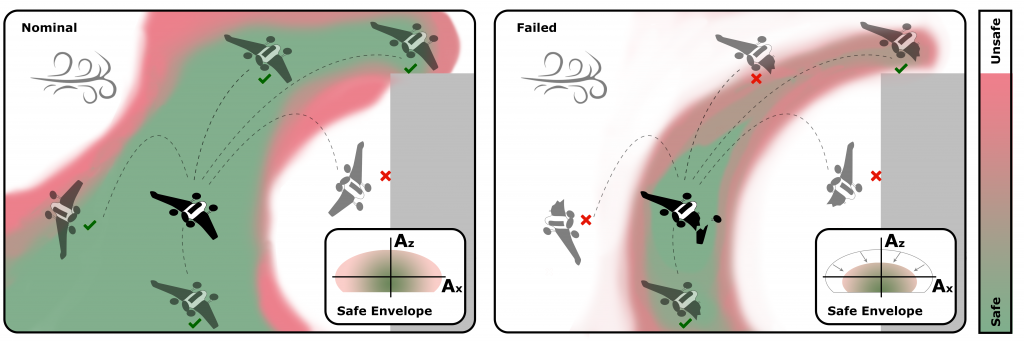In November 2020 I was awarded the NWO-Vidi grant (800.000 euros) for developing a new methodology for accurately estimating and exploiting the safe envelope for autonomous robots: 81-researchers-receive-nwo-vidi-grant-worth-800000-euros
Autonomous robots (ARs) such as self-driving cars and drones will revolutionize the way we work and live in the near future. However, their immense economic potential is blinding us to a serious safety issue: ARs are sensitive to loss-of-control, particularly after failures. Loss-of-control is caused by the system leaving the region of safe operating conditions known as the safe envelope, which shrinks in an unknown way after system failures. World leading researchers and industry have expressed strong interest in a system that can in real-time predict the reduced safe envelope after failures. However, there is a fundamental issue with all safe envelope prediction systems: they can only provide a dangerously simplistic binary safety representation because they neglect uncertainties such as model mismatch and external disturbances.
I propose a new paradigm: forecasting-enhanced probabilistic safe envelope prediction. My first insight is to introduce a new probabilistic safe envelope prediction method that takes into account general uncertainties. My second insight is to link loss-of-control to tipping-points: sudden catastrophic changes in the behaviour of a dynamic system which can be predicted using forecasting techniques. Combining both insights yields the new paradigm; probabilistic safe envelopes provide the location in state-space, and forecasting the time to an impending loss-of-control event. This results in more accurate, reliable, and realistic safe envelope predictions which can be corrected in real-time thereby bringing loss-of-control prevention for ARs to a completely new level.
At the same time, a more accurate prediction of the safe envelope boundaries will allow for a high level controller to safely and accurately balance safety and performance. Effectively, it is as if every autonomous drone or robot will have its own pro race car driver onboard, able to fly the drone ‘on the edge’ if necessary!



